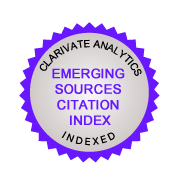Abstract
This paper argues that efforts to understand historically remote patterns of thought are driven away from their original meaning if the investigation focuses on reconstruction of concepts, instead of cognitive complexes. My paper draws on research by Jan Assmann, Jean-Jacques Glassner, Keimpe Algra, Alex Purves, Nicholas Wyatt, and others on the cultures of Ancient Greece, Israel, Egypt, Mesopotamia, and Etruria through comparative analyses of the semantic fields of spatial and temporal terms, and how these terms are shaped by their relation to the sphere of the sacred. It shows that there are three super-ordinate timeframes - the cyclical, the linear and the static - each of which is composed of lower-order cycles (days, lunar months, and seasons). These timeframes reflect their cultures ideas about the nature, scope and power of the gods, and structure the common point-of-view about the present, the past and eternity. There are also super-ordinate spatial frames which reflect their cultures ideas about the heavens and which structure both the sacred precinct and the profane field of action and exchange. Close analysis of texts that use words such as eternity, forever, past, present, and future, for example, do not reveal that there is anything like a general abstract concept of time in virtue of which some thing or event can be said to be in time or to have its own time. Archaic patterns of thought do not differ from our modern patterns in having different concepts, but in not having anything like concepts at all.
Recommended Citation
MacDonald, Paul S.
(2013)
DOI: https://doi.org/10.31979/2151-6014(2013).040207
"Palaeo-Philosophy: Archaic Ideas about Space and Time,"
Comparative Philosophy: Vol. 4:
Iss.
2, Article 7.
Available at:
https://scholarworks.sjsu.edu/comparativephilosophy/vol4/iss2/7


